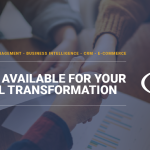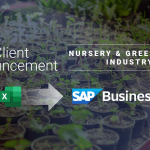ERP, CRM, WMS, EDI – Decoding the Alphabet Soup: A Guide to Industry Acronyms
Let’s face it—when you’re deep in the trenches of any industry, it’s easy to forget how overwhelming all the acronyms we toss around can be for newcomers or outsiders.
But here’s the thing: clearer communication makes everyone’s life easier—whether it’s for new hires trying to get up to speed, customers evaluating new our solutions, prospects figuring out what they need, or partners trying to collaborate effectively. That’s why we decided to compile the most used acronyms in the business management software, manufacturing and distribution worlds– and just make everyone’s life easier.
Here is our guide to acronyms most often used in the world of technologies for small and midsize businesses:
AI: Artificial Intelligence
AI is a set of technologies that enable computers to perform a variety of advanced functions, including the ability to see, understand and translate spoken and written language, analyze data, make recommendations, and more.
API: Application Programming Interface
It is a set of rules and specifications that allows different software applications to communicate and interact with each other.
BI: Business Intelligence
Business Intelligence software collects and provides real time data to analyze trends, discover patterns, and generate informed decision making. With BI you can customize dashboards, create reports, run queries, and produce graphics/visuals as you need them, at the click of a button.
Products: N’Sight, Tableau & Power BI
BOM: Bill of Materials
A Bill of Materials is a list of all the raw materials, components and parts with their quantities required to manufacture and design a final product.
Products: Included in SAP Business One
CRM: Customer Relationship Management
Customer Relationship Management software stores all your business partners including clients, prospects, vendors, suppliers, and tracks all the activities/opportunities associated with them throughout marketing, sales, and service lifecycles. A CRM can automate workflows including cold outreach and nurturing activities for marketing, lifecycle progression and automated documentation sequenced for sales, as well as payment tracing and customer inquiry for services.
Products: Creatio
DW: Data Warehouse
It is a digital storage system that connects and harmonizes large amounts of data from many different sources.
EDI: Electronic Data Interchange
Electronic Data Interchange replaces paper, fax, and manual inbound and outbound order processes and communications. EDI is a great tool to automate the entry, accelerate the processing, and increase the accuracy of data, resulting in streamlined communication and faster order fulfillment.
Products N’Tegrate
ERP: Enterprise Resource Planning
Enterprise Resource Planning software is a business management system that streamlines many of your core business processes (accounting/admin, sales, inventory, production, etc.) in one integrated platform. It is designed to collect and centralize all your data in one location and allow complete visibility and traceability of your operations throughout the entire supply chain.
Products: SAP Business One
FIFO: First In, First Out
FIFO is a system where the oldest inventory (the first items added to stock) is picked, used, or sold first. This means that stock is rotated so that the oldest items are always used before newer ones, ensuring that inventory does not become obsolete or expire.
GDPR: General Data Protection Regulation
It is a regulation that harmonizes national data privacy laws throughout the EU and enhances the protection of all EU residents with respect to their personal data.
KPI: Key Performance Indicator
Key Performance Indicators are quantitative measures and statistics that demonstrate progress and results relative to important metrics within an organization, department, or initiative. KPIs are essential in tracking the success of goals and objectives while also providing quality data for informed decision-making.
LIFO: Last In, First Out
This is a system for managing inventory where the most recently added (last) items to the stock are the first to be picked up or shipped out. Essentially, the newest inventory is used or sold first, while the older inventory remains in storage.
LISA: Logistics. Inventory. Scheduling. Application
Key to that streamlining is optimizing warehouse operations; from order management to dispatching to fulfillment and shipping. LISA distribution WMS products are seamlessly integrated with your business management solutions and are designed to better manage your supply chain, increase your visibility, your accuracy and the efficiency of your entire warehouse.
Products: LISA WMS
LLM: Large Language Model
It’s a type of artificial intelligence (AI) model that uses machine learning to understand and generate human language.
LTL: Less Than Truckload
It’s a shipping method where multiple shippers combine smaller shipments onto a single truck to share the cost of transportation.
MES: Manufacturing Execution Software
Manufacturing Execution Software tracks and controls the entire manufacturing process from raw materials to finished goods. An MES collects data from machines and operators to provide real-time visibility of your shop floor. MES also helps manufacturers meet compliance and transparency requirements, while also ensuring high production quality.
Products: Included in SAP Business One
MRP: Material Requirements Planning
Material Requirements Planning is a system designed to oversee operations of your manufacturing and production preparation. An MRP calculates and tracks the stock of materials and components needed to manufacture a product, as well as schedule those materials and components for production and purchase. MRP systems are gamechangers in times of fluctuating demand and ensure cost-effectiveness for production and delivery workflows.
Products: Included in SAP Business One
OCR: Optical Character Recognition
It is the process that converts an image of text into a machine-readable text format. For example, if you scan a form or a receipt, your computer saves the scan as an image file.
PDC: Production Data Collection
Production Data Collection software serves as a shop floor companion to collect real time data on machine performance, work orders, quality, and production cycles. PDC systems are used to track process efficiency and optimize production, which in turn can reduce costs.
Products: PDC-One
PIM: Product Information Management
This is the process of managing all the information required to market and sell products through distribution channels.
POS: Point of Sale
Refers to the systems, software, and hardware used by businesses to process sales transactions, including accepting payments, tracking inventory, and managing customer data.
QA: Quality Assurance
Quality Assurance is a process focused measure and aims to monitor and improve operations throughout the development of products. QA is considered a proactive measure.
Products: Included in LISA WMS & SAP Business One
QC: Quality Control
Quality Control is a product focused process and detects mistakes and errors made after the development of final products. QC is considered a reactive measure.
Products: Included in LISA WMS & SAP Business One
RaaS: robots as a service
It is a business model in which robots are provided to companies on a subscription or pay-per-use basis.
Products: See WMS Center of Expertise
RFID: Radio Frequency Identification
It is a technology that uses radio waves to identify and track objects wirelessly, without needing a line of sight or physical contact.
RFP: Request for Proposal
Is both the process and documentation used in soliciting bids for potential business or IT solutions required by an enterprise or government agency.
RFQ: Request for Quote
Is a document used to solicit price bids from vendors for a specific product or service when the requirements are well-defined.
RPA: Robotic Process Automation
It is a technology that uses software “robots” (or bots) to automate repetitive, rule-based tasks that humans typically perform.
SaaS: software as a service
It is a cloud-based software delivery model where users access and use applications over the internet on a pay-as-you-go basis.
SAP: Systems, Applications, and Products in data processing
It is a German acronym that refers to a leading enterprise resource planning (ERP) software used by businesses to manage various operations.
Products: SAP Business One
SCM: Supply Chain Management
A broad field encompasses the planning, execution, and control of all activities involved in moving goods, information, and finances from raw materials to the end consumer.
SDK: Software development Kit
It is a collection of software tools and programs provided by hardware and software vendors, allowing developers to build applications for specific platforms or systems.
SQL: Structured Query Language
It is a programming language for storing and processing information in a relational database.
TMS: Transportation Management System
It is a software platform used by businesses to manage the movement of goods throughout their supply chain. It helps with planning, executing, and optimizing the logistics of shipping and receiving, ensuring compliance, and managing documentation.
UoM: Unit of Measure
The unit of Measure is defined as the standard units of measurements used when accounting for stock and expressing them in quantities.
UI: User Interface
It is the point of contact between humans and computers. Any technology you interact with as a user is part of the user interface.
UX: User Experience
Which encompasses all aspects of a user’s interaction with a product, service, or company.
WMS: Warehouse Management System
Warehouse Management Systems are designed to track the workflows of all warehouse and inventory activities. A WMS eliminates outdated paper-based operations and allows for error free picking, packing, fulfillment and shipping. Barcode scanning, pick route optimization and expiry date tracking are just a few features that are worthy of a WMS investment.
Products: LISA WMS, Produmex and Korber
3PL: Third-Party Logistics
Third-party logistics is the act of outsourcing supply chain functionality including warehousing, fulfillment, transportation and the services associated with them. 3PL allows businesses to focus on other core competencies while reducing costs and improving efficiency.
Understanding the language of technology is key to making confident, informed decisions, whether you’re evaluating new systems, onboarding team members, or optimizing your operations. We hope this acronym guide serves as a helpful resource you can refer to again and again. And if you’re ever unsure where to start, N’ware is here to help you navigate the complexity and choose the right tools for your growth.






